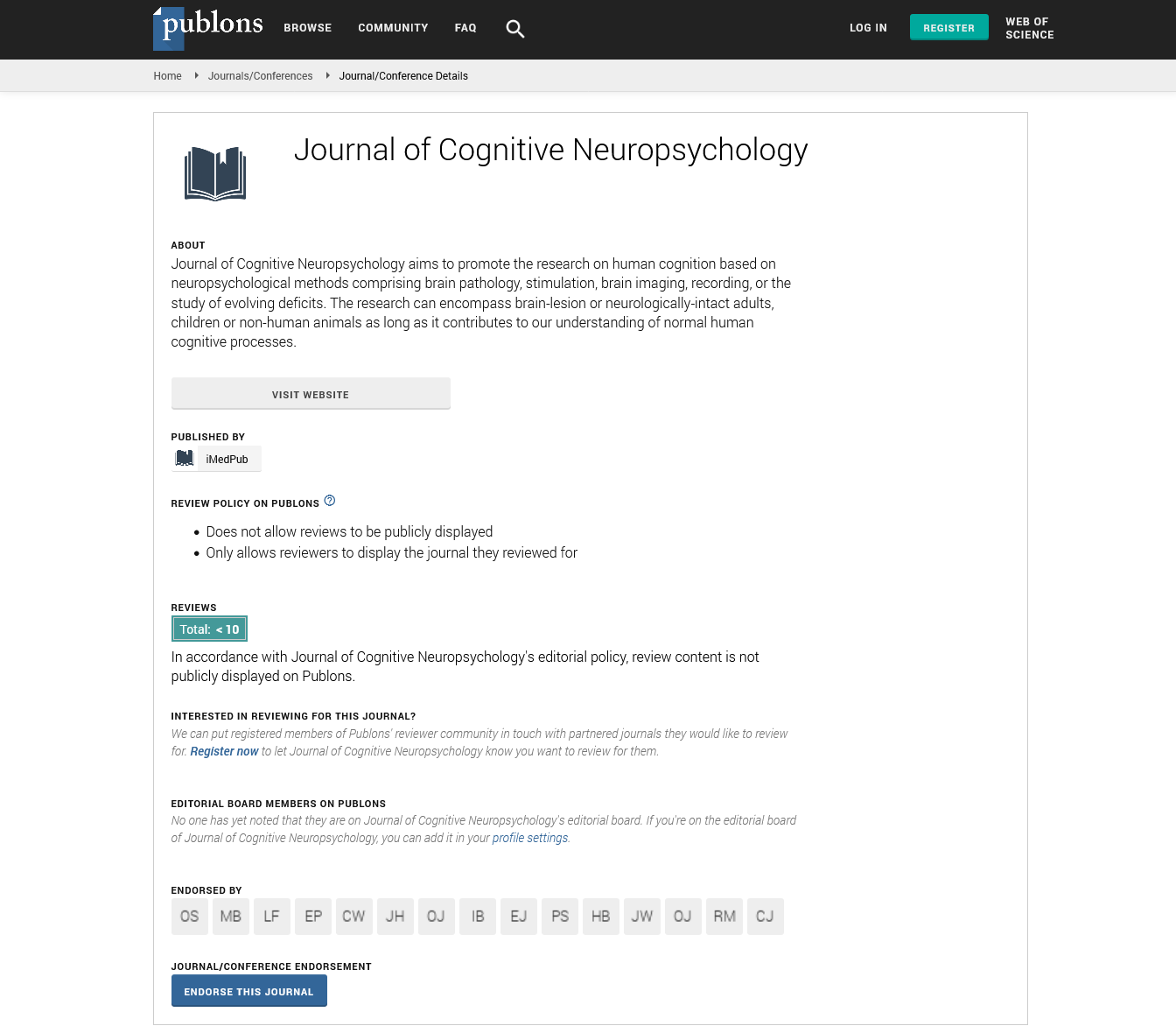A CBA of Corrective Lenses as a Dementia Intervention
17th World Congress on Vascular Dementia and Neurodegenerative Diseases
April 12, 2021 Webinar
Robert Brent
ScientificTracks Abstracts: Jour Cogn Neuropsy
Abstract
Dementia is a term used to describe various symptoms of cognitive decline, involving memory, language and thinking that are severe enough to affect daily activities. One of the most important symptoms of late-life dementia, especially those with Alzheimer’s disease, is the person’s lack of orientation. As poor vision can lead to disorientation, the loss of vision can be a primary contributor to dementia. Anything that can improve vision, such as corrective lenses, would therefore be one way of preventing the development of dementia. However, for any dementia intervention to be socially worthwhile, it is not sufficient that the intervention reduce the symptoms of dementia. It is also necessary that the benefits of the reduced symptoms be greater than the costs. The Analysis: In this study, we carry out a CBA of corrective lenses as a method for reducing the symptoms of dementia. The benefits of corrective lenses are obtained by estimating the direct and indirect effects (working through dementia symptoms reductions) of corrective lenses by reducing the probability of dying. The two mortality effects are converted to monetary benefits by using the value of a statistical life (VSL) obtained from the literature. There are two estimation equations: one for estimating the effect of corrective lenses on dementia symptoms, and a second one for estimating the effects of corrective lenses and dementia symptoms on the probability of dying. We use the Clinical Dementia Rating (CDR) Scale to measure dementia severity and the probability of dying is derived from our data set supplied by the National Alzheimer’s Coordinating Center (NACC). The Data and Estimation: The NACC data set consists of a panel of 118,00 patient visits, made up of an average of 3.2 visits over 13 years for over 30,000 participants at 32 US Alzheimer’s Disease Centers over the period September 2005 and May 2017. We use a fixed effects model for estimating the impact of corrective lens on dementia symptoms, which controls for time invariant individual variables. We use a random effects Logit model for estimating the effects of corrective lenses and dementia symptoms on the probability of dying, which has to be exogenous. . Main Findings and Conclusion: Corrective lenses reduce the symptoms of dementia by about 0.19 of a point (on a scale of 1 to 18). A one-point reduction in dementia decreases the probability of dying by 0.003. With a VSL of around $5 million (in 2000 prices), this makes the indirect benefits of vision correction $2,850. Since vision correction reduces the probability of dying by 0.004, and with the VSL again equal to $5 million, the direct benefits amount to $20,000. With the cost of vision correction found to be $226.48 (80% of this total being the cost of eyeglasses), the indirect benefits on their own cover the costs. Including the direct benefits, the benefitcost ratio of vision correction is over 100 and therefore very socially worthwhile. The results have special significance for Low and Middle Income Countries.
Google Scholar citation report
Citations : 8
Journal of Cognitive Neuropsychology received 8 citations as per Google Scholar report
Journal of Cognitive Neuropsychology peer review process verified at publons
Abstracted/Indexed in
- Google Scholar
- Publons
- MIAR
Open Access Journals
- Aquaculture & Veterinary Science
- Chemistry & Chemical Sciences
- Clinical Sciences
- Engineering
- General Science
- Genetics & Molecular Biology
- Health Care & Nursing
- Immunology & Microbiology
- Materials Science
- Mathematics & Physics
- Medical Sciences
- Neurology & Psychiatry
- Oncology & Cancer Science
- Pharmaceutical Sciences
